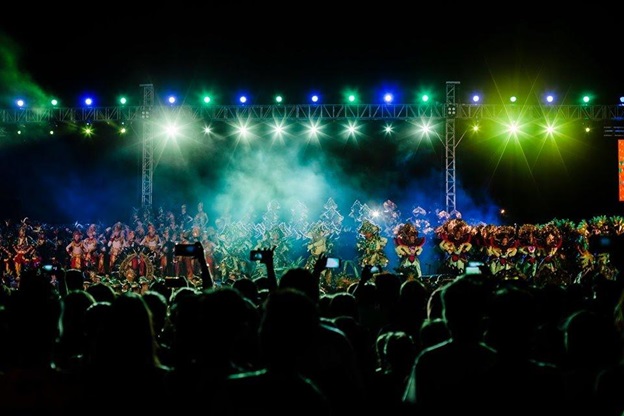It’s the merry, merry month of May once more and as they say Bohol sinks an inch with all the Boholanos coming home and guests pouring into the island for the annual fiesta celebrations.
FIESTA FEVER
Whether riding a tricycle, a dilapidated jeepney or a fully-loaded luxury vehicle, fiesta goers hop from house to house and town to town ready to party and revel in the lavish hospitality of Boholanos. So, is it true that in May there’s a fiesta every day in Bohol? Well, it is true. And yes, you can actually go around the island and not spend a single centavo for a meal. There’s always a town, a parish, a barangay, a sitio or even a purok celebrating fiesta where one can freely partake on the food and have fun.
In case you haven’t downloaded it yet, a so called “partial and unofficial” schedule has been circulating in the internet which clearly shows there’s a fiesta in Bohol every day for the whole month of May. When that list was first generated and posted online on the fb page of Mabini Bohol in 2016, it had very few entries. It actually took the help of netizens, specifically Boholanos worldwide who commented and added the fiesta dates of their own town or barangay, to come up with that long and almost complete list. Such becomes possible only at this age of social media when sharing data and information is a breeze; otherwise, someone had to gather data manually by visiting all of the 1,109 barangays.
BEYOND THE FOOD AND FUN
The fiesta tradition dates back to the colonial times, arguably when the Spaniards introduced the Roman Catholic faith. Placing a settlement or a town under the patronage of a particular saint and setting aside a date to honor the latter with a celebration would be a very convenient way to attract people from the hinterland to gather at the poblacion and participate in the colorful processions, religious dramas and the festivities making the work of Christianization easier and effective.
As the years go by, the tradition is so ingrained in the communities, it became much-awaited and is an important date in a town’s calendar. Preparations start nine days earlier with the novena masses and get fever pitch three days prior, the so-called ante “vesperas,” then the “vesperas” or the eve, until the feast day itself or “katumanan.” At times when the festivities overshadowed the religious significance of the celebration, old folks and priests admonish: “misa una, sa dili pa lamesa.”
But of course, Boholanos know better. There is something more to fiestas beyond the food and the fun. And it usually starts with “f” as well – the family reunions, the fellowship with kith and kin, the friendships rekindled with former neighbors and classmates who all come home to celebrate, making every fiesta unforgettable. Then there are those who make mark fiestas as a way to express gratitude to the heavens for all the blessings gained during the year.
FIESTA IN THE AGE OF SOCIAL MEDIA
When traditionally, residents open their homes to visitors and share food and fellowship; today, people open their celebration for the world to see through social media. The ubiquitous smartphone steals the show. A photo or video must record the visit of every friend, relative or long-lost neighbor. A picture needs to be taken first before people feast on the food at the table, sometimes even making them forget to say the grace before meals. It used to be that the host had to prepare albums and magazines to keep guests entertained before dining. There seems to be really no need for such today. An accommodating host has only to prepare enough chargers, charging stations, free WiFi or a good internet connection.
Sadly, though, people tinkering with their smartphones also diminish the interactions that used to highlight the festivities. As we used to say, it’s not about the food during fiestas but the fellowship we share that keeps the tradition going.
At the churches that used to be jam-packed with devotees paying homage to the town’s patron saint, some people can be observed taking photos and videos, at times disrupting the solemnity of the masses and other religious activities. The same can be said during processions and even street dancing festivities, such as the Saulog Festival in honor of Tagbilaran’s patron, St. Joseph the Worker.
Whatever is the reason or the disruption, though, the fiesta month is here and we say “cheers!” (Sonieta Deguit Labasan)


